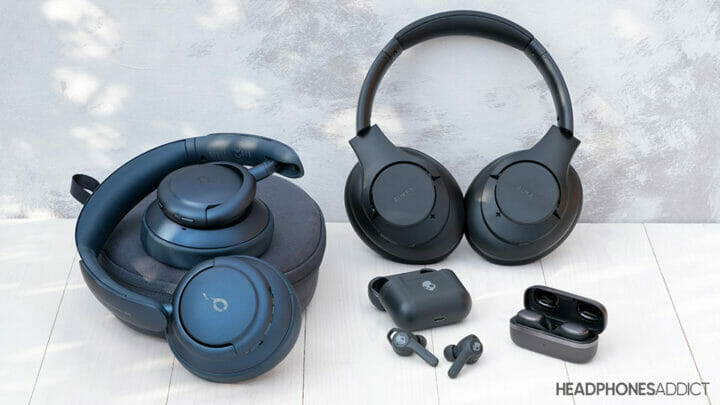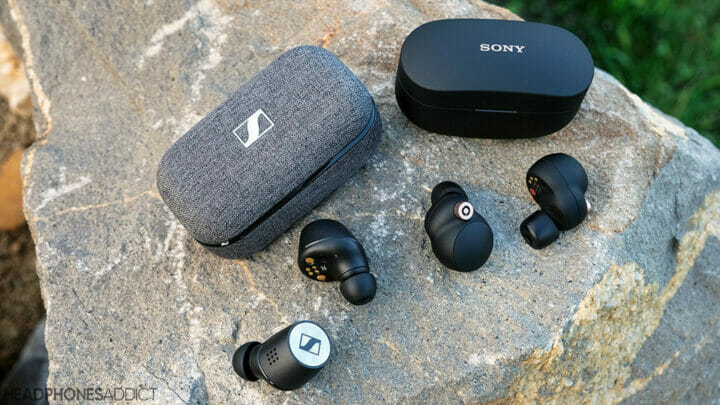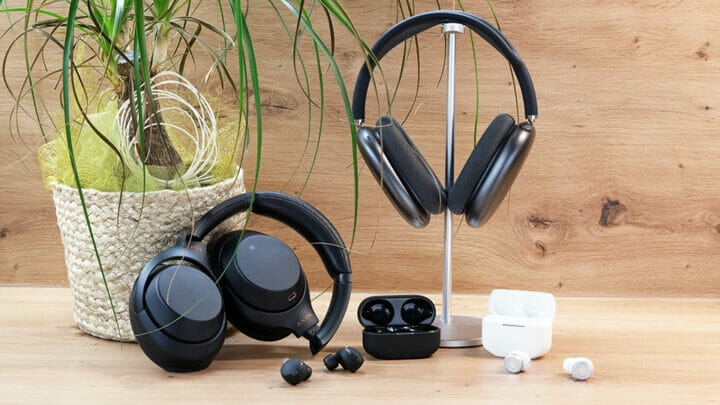
Learn about the ambient sound mode and whether or not you need it.
Modern headphones are packed with features. While ANC feature actively reduces ambient sound, there’s another one that boosts it.
The feature is called Ambient sound mode. But headphone manufacturers also use their own names such as “Transparency mode”, “Transparent Hearing”, “Ambient mode”, “Hear-Through”, “HearThru”, and so on.
What is Ambient Sound Mode?
The ambient sound mode uses microphones to record ambient sounds and then plays them back into your ears through headphones or earbuds.
It makes you more aware of your surroundings without taking off your headphones.
Why is ambient sound mode useful?
Because it’s annoying to take your headphones off every time you want to hear ambient sound. Whether that’s a person speaking to you, passing cars, or an alert for your next bus stop.
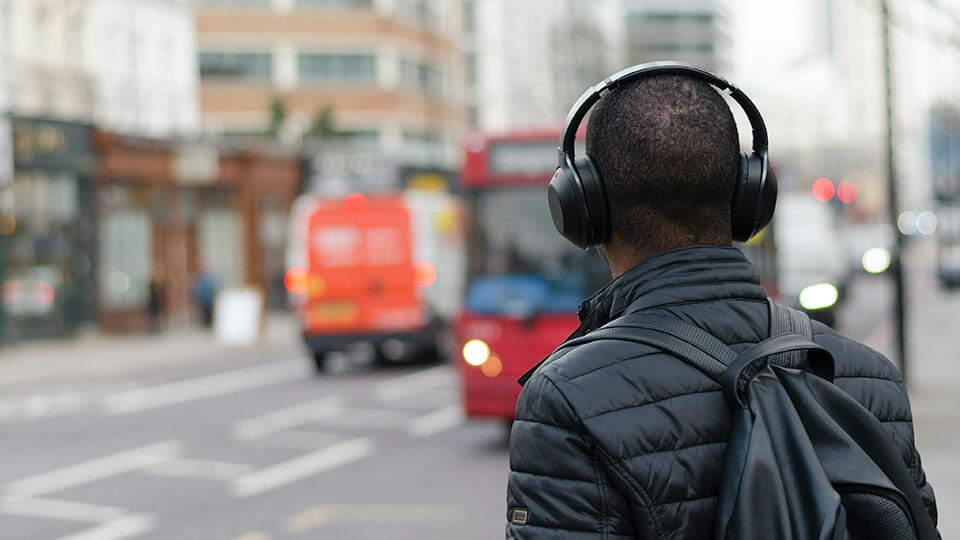
The main use of ambient modes is to enable you to talk to the person next to you. Press a button and you can already have a conversation and eliminate the need to take off your headphones.
Almost…
Sometimes you can’t beat taking your headphones off. That’s because microphones can’t pick up sounds the same way as your ears, especially those coming from far away.
Ambient Sound Mode vs. Active Noise Cancelling on Headphones
The difference between ambient sound mode and noise cancelling is that the first amplifies ambient noise, whereas the second cancels ambient noise.
You use active noise cancelling (ANC) when you want to reduce unwanted background noise and focus on your music or work.
And when you want to talk to people and hear what’s going on around you, you turn on the ambient sound mode and hear your surroundings through headphones.

Active noise cancellation is important in aviation, where the first active noise-canceling headphones were massively used.
ANC headphones record background noise with microphones and invert its phase using built-in electronics. Then they play the inverted/opposite sound back into your ears, which cancels out the background noises.
Don’t confuse noise cancellation with passive isolation. The latter reduces ambient sounds passively, without the use of electronics. Here are some of the best noise isolating headphones.
What is an adaptive noise cancellation?
- This is a fancy term for ambient noise cancellation that changes automatically depending on the situation you’re in.
The idea is that you don’t want to use full noise cancelling all the time. Sometimes you want to let some of the ambient sounds through, like in a public place (you want to hear the announcement when your airplane is departing).
The headphones have their own “AI” or internal programming that determines which noise cancelling mode is the most suitable for the noise levels that they are currently recording.
Usually, you can control what sound mode you want to use or if you want to leave it to adaptive programming. It’s a feature most common in premium, higher-end noise cancelling headphones.
Best Headphones with Ambient Sound Mode
You can find Ambient sound modes even in budget-brand headphones. However, they don’t work nearly as well as in premium models.

Headphones with good Ambient mode can cost around $100 and more.
What are the leading headphone models with an ambient sound mode?
- Check the best noise cancelling headphones that have ambient sound modes that work really well.
- Also, look at the best noise cancelling earbuds for a smaller fit but equally great performance.
What are the leading headphone models with passive noise isolation?
To get effective noise isolation, look for closed-back headphones with over-ear earcups. Those are much better at blocking unwanted sound.
- Check the best passive noise isolation headphones.
What are the leading headphone models that allow people to hear ambient noise?
Headphones that let through the ambient sound by design are open-back and open-air headphones.
Open-back means the ear cups are open and don’t enclose the drivers, so there is a direct path for air to travel from outside to your ears.
Read more: Open-back vs. closed-back headphones

Usually, open-back headphones create better spatial sound, better soundstage, and give a superior sense of space the music is coming from.
- Here are some of the best open-back headphones on the market.
And if you’re looking for small earbuds, you can check the classic earphones that don’t go in-ear but stay on the outside of the ear canal.
- See the best earphones that don’t go in ear.
What is Ambient Sound?
Ambient noise is all the environmental sounds you hear around you. In headphones, ambient noise is everything that you hear but isn’t in the original audio (song, podcast, video…).
Ambient sound examples include the noise of traffic, weather, animals (birds), waves, alarms, people chatter, and noise from devices such as air conditioning, fans, refrigerators, etc.

Background noise (or noise pollution) is generally an unwanted part of listening to music.
It takes away from the listening experience of your favorite song, makes details harder to hear, and causes miscommunication during a phone call.
Also, it encourages listening to higher volumes, which might lead to hearing damage.
Why you want to hear ambient noise while wearing headphones?
The only time you want to hear ambient sound while wearing a pair of headphones is when you want to interact with other people and be aware of your surroundings.
It’s useful for runners (and cyclists) who are jogging on the streets where they need to pay attention to the traffic to avoid accidents (because lack of awareness can be deadly).

Also, it’s useful in business environments where you need to talk with people next to you and make many phone calls.
For everyday situations, you want to hear important sounds when you want to communicate with people, like talking with a store clerk or other service people.
Of course, turn Ambient sound mode to talk to people only when making quick replies. For longer conversations, it’s probably rude to keep your headphones on.
What effect does ambient noise have on people?
Depends on whether you talk about headphones or real life.
In headphones, there are no health hazards caused by amplifying background noise. However, if it’s loud, it can veil fine details in music, forcing you to crank up the volume and damage your hearing.
In other words, it makes the listening experience worse by covering and blocking your music.
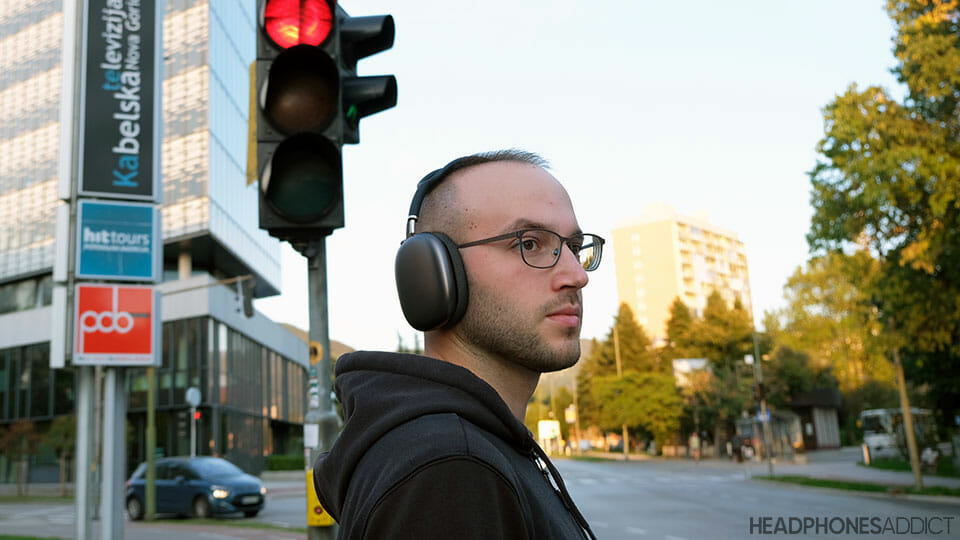
On the other hand, ambient sound helps some people relax and fall asleep more easily. When the noise mimics a different, more relaxing surrounding environment, it gives you a sense of being in touch with your surroundings.
Of course, there’s a limit. Too much ambient noise in your living area can negatively affect your quality of life.
Ambient Noise vs. White Noise
What is white noise?
White noise is a combination of all sound frequencies that humans can hear with equal intensity and volume.
It’s constant and repeating, a dense signal that sounds like static in some broken electronics.
As an example, when you’re manually searching for a radio channel or TV channel (back on analog TVs), you often encounter an in-between point that produces white noise.
Just like ambient sounds, white noise is also considered an audio polluter and is generally unwanted.
The reason is that it scrambles your hearing perception because it creates all sounds. It makes it impossible for the brain to determine which sound is the “right” one (the one you want to hear).
This makes it useful for drowning out voices and other audio pollution when you want to relax or have a good night’s sleep.
A lot of wireless and active noise-cancelling (ANC) headphones produce tiny white noise as the result of their flawed technology.
Some suffer from it worse than others and it depends on the model and version.

Interestingly, while grown-ups hate the sound of white noise, it’s apparently quite calming to little kids and it can even help them fall asleep according to these studies.
Why is it called white noise?
Just like white light is a combination of all colors, white noise is a combination of all (audible) sounds. It’s a combination of all different sound frequencies.
How is white noise different from ambient noise?
- White noise is a collection of multiple frequency bands playing at equal volume.
- Ambient noise varies in both frequency and volume and sounds more pleasant. Though, both are still unwanted when listening to music.
Ambient (or background) noise is anything that isn’t the original audio. It can be a regular or one-time occurrence. It’s often random with different intensity, volume, and frequency (it depends where you are).
It’s disruptive and annoying but doesn’t mask music as efficiently.
White noise is different in its constant intensity and repetition of all sound frequencies, which makes it impossible to overhear. Thus, it makes your music inaudible.
Also, humans can generally identify the origin of ambient noise (a sound of a car, a bird, construction site), whereas they can’t identify a white noise.
Frequently Asked Questions (FAQ)
Should ambient sound be ON or OFF?
When you want to hear your surroundings, talk to people, and stay aware, keep the ambient sound mode on. But when you want to hear as little background noise as possible, turn it off.
For example, when walking down a busy street, and talking to a shop clerk turn it on. When listening during a commute or at home, keep it off.
Is ambient sound mode noise cancelling?
No, the ambient sound mode is the exact opposite of active noise cancellation. Ambient sound mode amplifies the surrounding noise and plays it back into your ears, whereas active noise cancelling reduces surrounding noise, so you hear less of it.

Matija Ferjan is a seasoned audio enthusiast reviewing headphones since 2015. He has personally tested hundreds of headphones and earbuds. He’s an active member of the Headphone Audio community and a true nitpicker, always looking for the “best-value-for-money” headphones.


